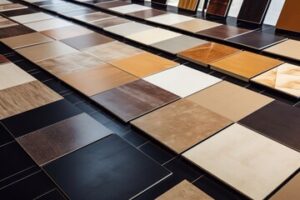Aside from the energy savings, new windows add value to your home. They look great and let in more natural light, making your space feel larger and more inviting.

Unlike new construction windows, Replacement Windows Potomac are designed to fit into existing openings, without alterations to the wall or trim. This allows for minimal household disruption and saves time.
A new replacement window not only looks great and increases your home’s energy efficiency, it also protects your building from moisture damage. Replacing old windows is a major undertaking, so it’s important to be well-informed before the project begins. Read on to learn about the entire installation process, from assessing the site to installing the window itself.
The first step in the process is preparing your old window frame for replacement. The contractor should remove the existing window, remeasure the opening and clean the area to prep it for installation. They will also mark the wall where the new window will go to ensure that everything lines up properly.
After the old window is removed, the new window is inserted into the frame and fastened with screws. The screws should be driven just past the surface of the framing to minimize moisture damage.
Once the new window is in place, the installer should apply insulation and caulk to ensure a tight seal. Insulation helps keep hot and cold air in your home during the winter and summer, and caulking reduces drafts. A high-quality contractor will take care not to leave any gaps or cracks, so it’s important to follow their instructions carefully.
Before the installation crew starts working, they should cover any furniture and wall decorations to prevent them from getting dusty or damaged during the construction. They should also tarp any areas where they will be walking or working, which can help minimize dust and debris. It’s also a good idea to move any fragile items away from the work area so they can be safely handled and stored.
A quality contractor will always use wood interior stops to finish off the edges of the new window. These are attached to the jamb with a brad nailer or screws, and they should be painted or stained before they’re installed.
Finally, the installer should shim the window as needed to make sure that it’s square in the jamb opening and leveled horizontally and vertically. They can do this by measuring diagonally across the window and adjusting it until the measurements are equal. Then they’ll drive screws into the upper left and lower right corners to secure it in place.
Financing
For homeowners who cannot afford to set aside a large sum of money for window replacement, there are financing options available. These can include personal loans, home equity loans, and credit cards. These options allow you to spread out the cost of your windows over a number of years, making them more affordable.
Personal loans are a great option for homeowners who need to pay for a variety of needs in a short amount of time. They are typically easy to qualify for and do not require a large down payment. However, their interest rates can be high and they can take a long time to pay off. Credit card financing is also a good option for some homeowners, but it comes with many fees that can add up quickly.
Many replacement window companies offer their own financing programs, which can be more flexible than traditional loan options. These programs can help you make small monthly payments until your project is complete. This can be a great way to save up for the cost of your windows without having to empty your family savings account.
Window replacement can be a big investment, but it is one that can improve the energy efficiency of your home and increase its value. Many states have programs that will provide tax credits or rebates to homeowners who invest in new, energy efficient windows. It is important to research these programs and consult with professionals who can offer advice on the best financing options for your home.
Window financing programs can be an excellent way to save up for the cost of your new windows, but you should always consider other financing alternatives before taking this route. For example, a credit card with rewards can be an effective alternative to financing, but it can have expensive interest rates and can affect your credit score. A home equity loan or HELOC is another financing option that can be effective, but it requires you to use your house as collateral. Finally, an FHA rehab loan is a mortgage loan that can be used to finance renovations and repairs, including the cost of replacement windows.
Warranties
Warranties can be a great way to add confidence in the work of your window replacement company. They can cover a range of issues, including breakage, installation errors, and defects in materials. But be careful about the length of coverage. Warranties can have different durations for different components of the window, and they may require maintenance or specific procedures in order to remain valid.
Depending on the type of windows you choose, warranties can also differ in terms of transferability and duration. A double lifetime warranty, for example, covers windows for twice as long as a standard lifetime warranty. It can also be passed on to a new homeowner in the event of a home sale. On the other hand, a prorated warranty typically covers a decreasing percentage of replacement parts over time and can be voided by certain circumstances.
When choosing a window replacement contractor, you should ask plenty of questions and carefully read the warranty documentation. Look for sections that outline coverage, breakage, failure, duration, and transferability. You should also check the fine print for any exclusions and other important details that could affect your potential warranty coverage.
You should also consider the reputation and reliability of the company in question. Companies with a solid track record of quality products and service are more likely to honor their warranty guarantees and provide efficient customer support in the event of an issue.
Additionally, you should consider how a window warranty may impact the overall cost of your project. For example, some companies require homeowners to pay for labor to file a claim, which can add up over the course of several repairs. These fees are often less than replacing the windows altogether, but they can still be a significant expense. Other companies have no such fee, so it is a good idea to know what to expect before you decide on a window contractor.
Energy Efficiency
Replacing old, drafty windows with new Energy Star rated models can save you money on your heating and cooling costs by cutting down on the air leakage that can make a home feel cold. The amount of savings you’ll realize depends on where you live and which window model you choose. However, the Environmental Protection Agency estimates that replacing 10 inefficient single-pane windows with new Energy Star rated models can reduce your heating and cooling costs by up to $225 per year.
Your frame material will have a major impact on the energy efficiency of your replacement windows. Many homeowners prefer to purchase and install frames made from durable, low-maintenance materials such as vinyl or aluminum-clad wood, which offer a combination of beauty and performance. If you want to maximize the amount of natural light that enters your living spaces, consider installing larger windows or those with narrower frames. Natural light can brighten your home and improve your mood. It can also reduce your reliance on artificial lighting during the day, which will help lower your energy bill.
A new windows installation will also increase your home’s value. Whether you opt for inserts or full-frame replacement windows, the addition of energy efficient features can add up to an 80 percent return on your investment if you sell your house in the future.
Another sign that window replacement is a smart choice is if your current windows are difficult to open and close, or have fogging or condensation between glass panes. A quality, energy-efficient replacement window will eliminate these problems and provide you with a comfortable indoor space that’s easier to maintain.
Window rebates are an excellent way to offset the cost of new windows. These financial incentives are offered by government agencies to encourage home owners to make energy-efficient upgrades. To learn more about the available options in your area, contact your local utility company or visit the website for the National Fenestration Rating Council (NFRC). This organization is responsible for providing independent ratings and labels on energy efficiency for windows, doors, skylights and attachment products.

